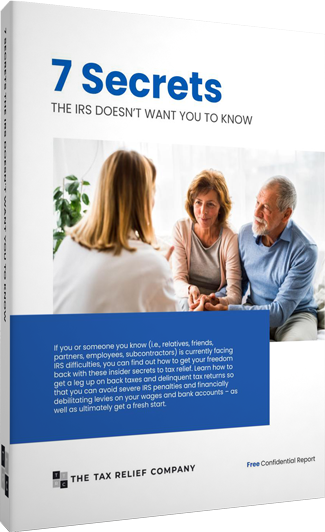“I Have This, You Have That” IRS Notice
“I Have This, You Have That” IRS Notice. An SFS Tax Problem Solutions Blog.
How do you do more with less? You automate. Apparently, the IRS got the memo on this one.
You’ve probably heard that less than one percent of tax returns are audited each year by the IRS. For the 2016 tax year, it was .5% – one half of one percent – of all returns.
Sounds good, right?
It does… until you learn that another 2 million of returns were served with an “I Have This, You Have That” notice. This increases your chance of having to deal with the IRS on your tax return by 320%!
 What is an “I Have This, You Have That” Notice?
What is an “I Have This, You Have That” Notice?
The notice that the IRS sends is technically referred to as a CP2000.
“It is not a bill for taxes due, although it does look like one,” explained Jeffrey Schneider, EA, CTRS, NTPI Fellow and CEO of SFS Tax Problem Solutions. “If you receive a CP2000 notice, it indicates that the income and/or payment information that the IRS has on file doesn’t match the information reported on the tax return. This could affect the tax return by causing an increase or a decrease in the tax. It also may not change the return at all.”
You see, the IRS receives information directly from employers and other entities. It has your 1099s , your W-2s, and other income tax documents from all of the organizations that are required to file them. And those tax deadlines are typically earlier than yours.
Once your return is in, the IRS can (and does) match information they receive about you against your return. If there is a mismatch, you will likely receive a notice from the IRS stating you owe more tax… and penalties and interest on top of that.
It’s all part of a program the IRS calls the “Automated Underreporter Program.”
The most common errors were:
- 7% calculation income or other taxes
- 6% number or amount of exemptions
- 8% standard/itemized deduction related
- 8% earned income tax credit related
This is not an audit per se… but it sure feels like one. You are on the hook to prove your figures were correct. If you can’t, you are subject to the additional tax, penalties and interest as listed on the notice.
What does this mean to you?
Given the success of this program and the budget cuts the IRS has endured, this upward trend is likely to continue. We’re likely to see more of these notices in mailboxes across the country.
In fact, the IRS increased the number of these automated notices for by 24% in 2016.
Revenue from these programs generated nearly $6.7 billion for the government for the 2016 tax year.
Meanwhile the IRS has had $900 million in budget cuts and 21,000 fewer employees since 2010. Another budget cut is proposed for the 2018-2019 fiscal year.
Because it’s an automated process, the IRS can send out more notices with less staff and budget.
In other words, this is not stopping anytime soon!
The Bottom Line
You need to know that the IRS is matching the information it receives from others with your tax return.
It appears the IRS is using this automated technology more (or it is catching more errors).
Don’t be lulled into a false sense of security about your taxes. To be safe, assume that any discrepancy between the information filed directly with the IRS versus reported on your return will be caught.
Honesty is always the best policy.
Now we do recognize that even honest people make mistakes.
Unfortunately, any transposed numbers or inadvertent omissions are still punishable with penalties and interest. It may be a good idea to get a qualified tax preparer to help you. When it comes to taxes, you can’t be too careful.



